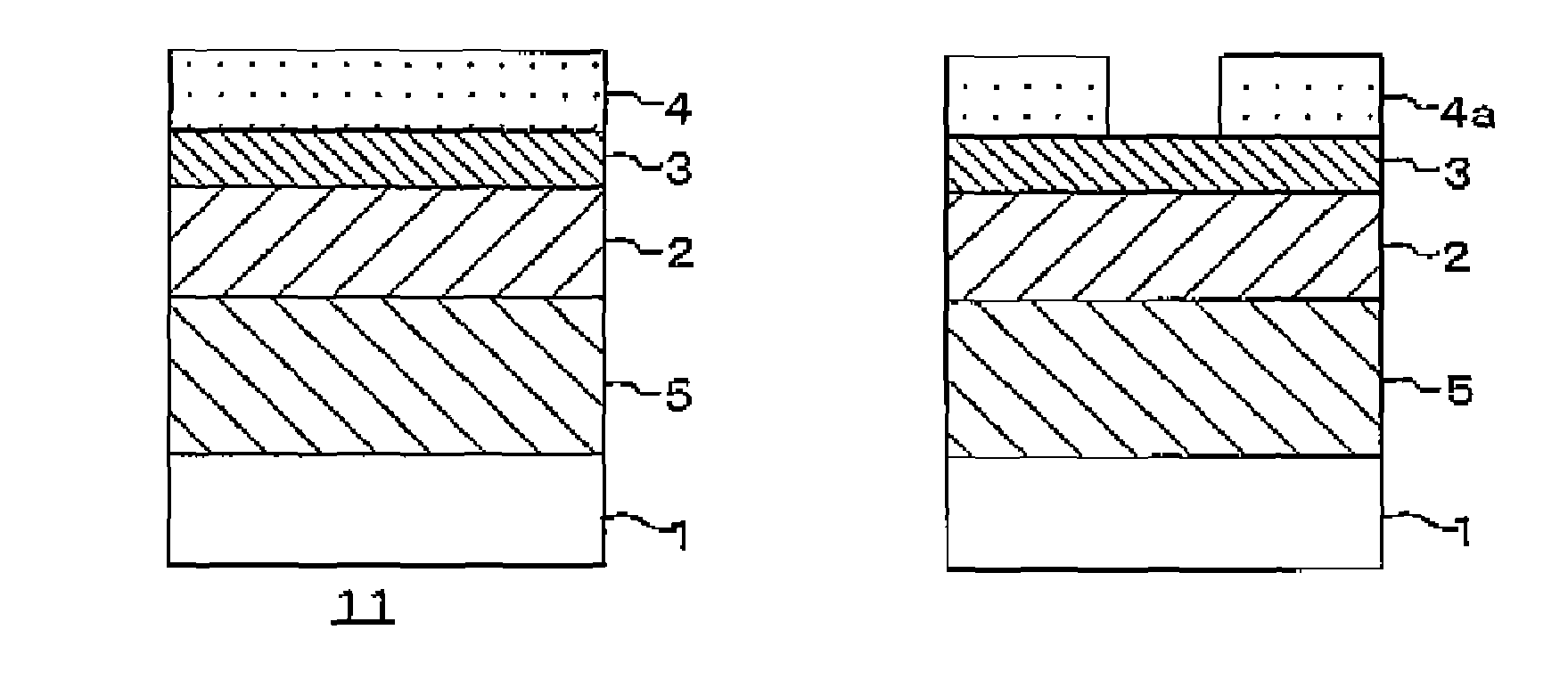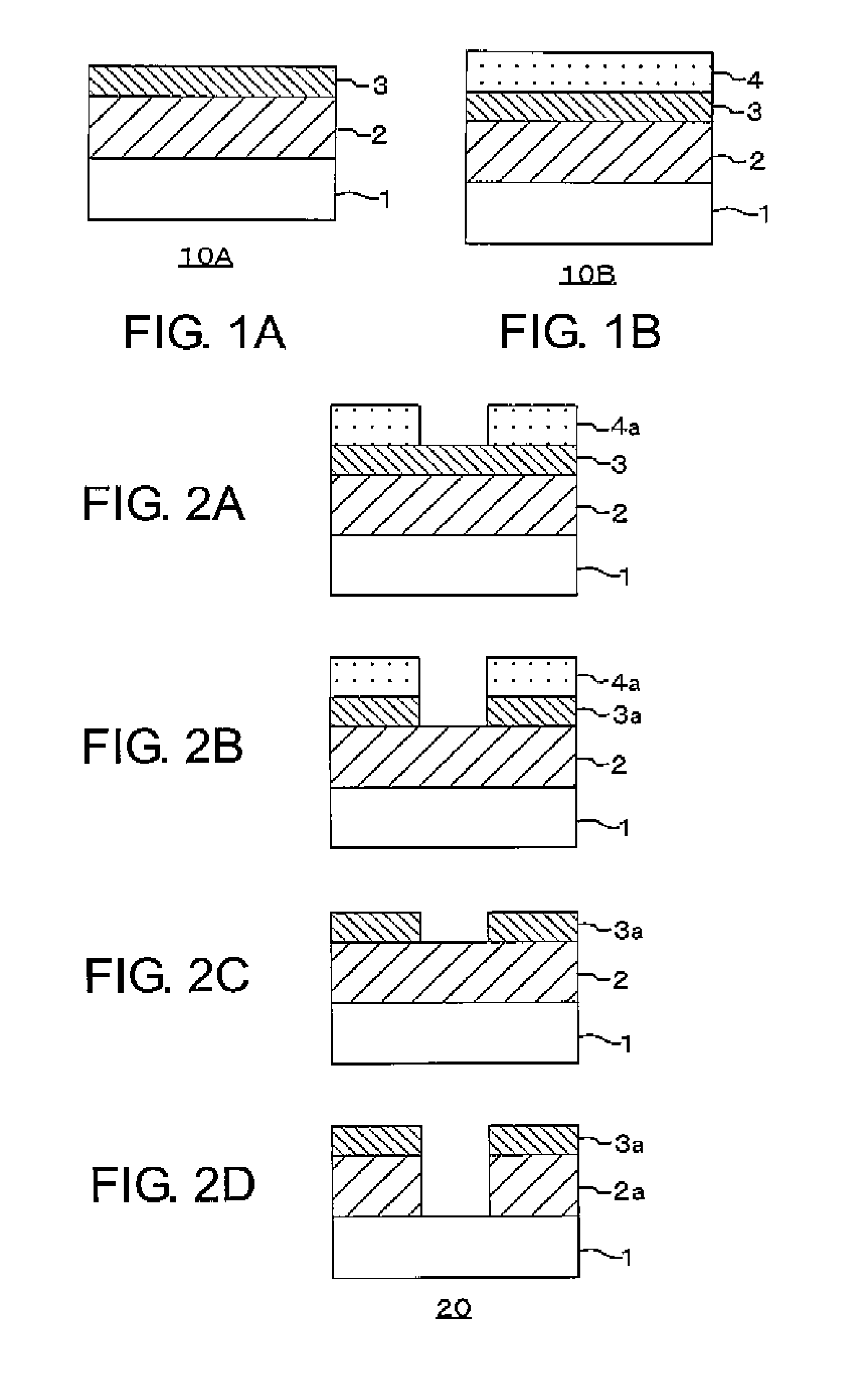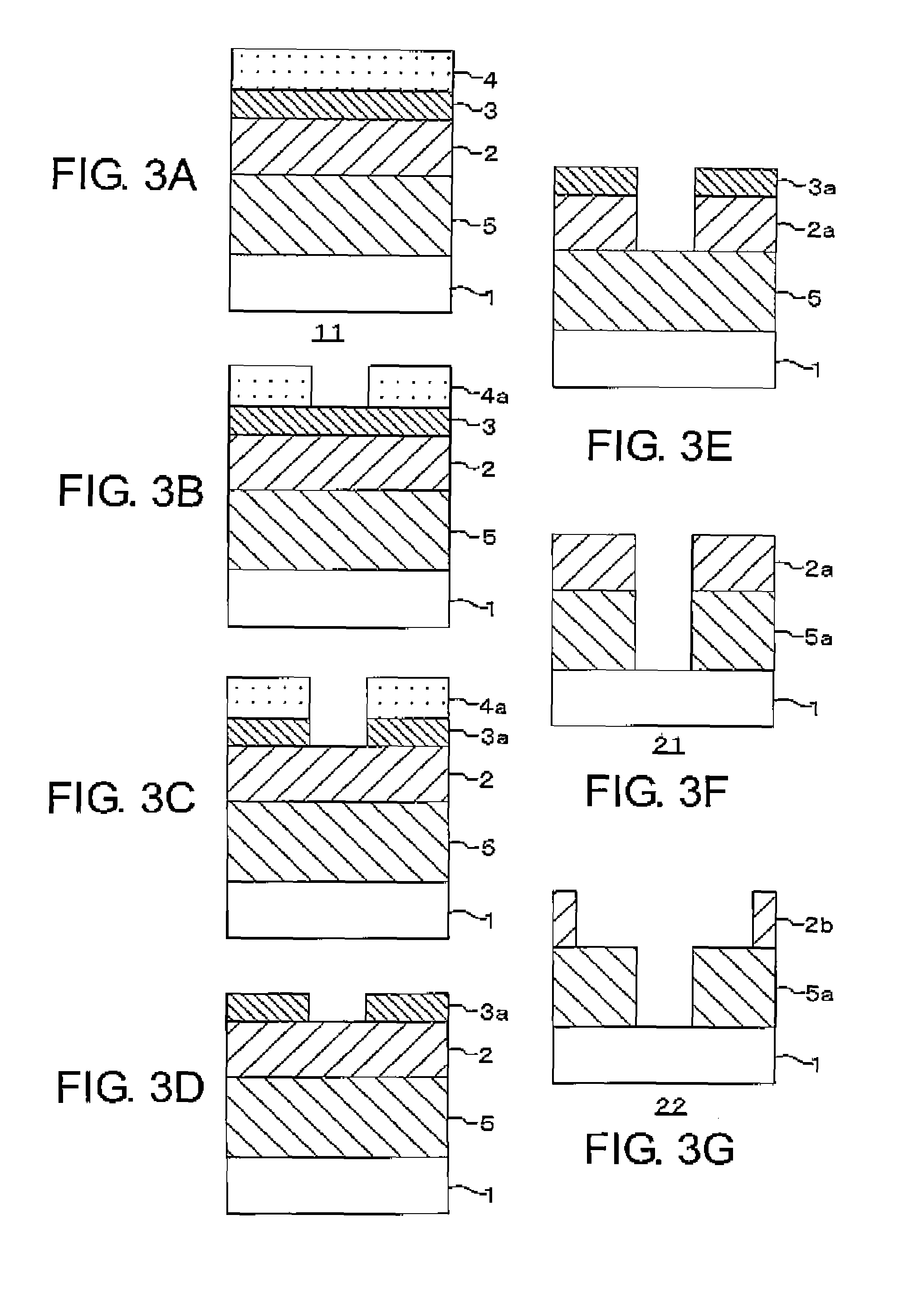Mask blank and method of manufacturing a transfer mask
a mask and mask technology, applied in the field of mask blanks and a manufacturing method of masks, can solve the problems of low conductivity of the target, defect tendencies, defect types, etc., and achieve the effects of excellent resist coating properties, reduced thickness, and high etching selectivity
- Summary
- Abstract
- Description
- Claims
- Application Information
AI Technical Summary
Benefits of technology
Problems solved by technology
Method used
Image
Examples
example 1
[0115]Using a single-wafer DC sputtering apparatus and using a chromium target as a sputtering target, reactive sputtering was carried out by setting the power of a DC power supply to 1.7 kW in a mixed gas atmosphere of argon, carbon dioxide, nitrogen, and helium (gas pressure 0.2 Pa; gas flow rate ratio Ar:CO2:N2:He=24:29:12:35), thereby forming a CrOCN layer with a thickness of 39 nm on a transparent substrate of a quartz glass. Then, using the chromium target, reactive sputtering was carried out by setting the power of the DC power supply to 1.7 kW in a mixed gas atmosphere of argon, nitrogen monoxide, and helium (gas pressure 0.2 Pa; gas flow rate ratio Ar:NO:He=27:18:55), thereby forming a CrON layer with a thickness of 17 nm. Finally, using the chromium target, reactive sputtering was carried out by setting the power of the DC power supply to 1.8 kW in a mixed gas atmosphere of argon, carbon dioxide, nitrogen, and helium (gas pressure 0.2 Pa; gas flow rate ratio Ar:CO2:N2:He=2...
example 2
[0123]Using a single-wafer DC sputtering apparatus and using a mixed target of molybdenum (Mo) and silicon (Si) (at % ratio Mo:Si=10:90) as a sputtering target, reactive sputtering (DC sputtering) was carried out by setting the power of a DC power supply to 2.8 kW in a mixed gas atmosphere of argon (Ar), nitrogen (N2), and helium (He) (gas pressure 0.3 Pa; gas flow rate ratio Ar:N2:He=5:49:46), thereby forming a MoSiN film with a thickness of 69 nm on a transparent substrate of a quartz glass. Then, the substrate formed with the MoSiN film was heat-treated (annealed) at 250° C. for 5 minutes, thereby forming a phase shift film for ArF excimer laser light (wavelength: 193 nm) in the form of a single layer composed mainly of molybdenum, silicon, and nitrogen. This phase shift film had a transmittance of 5.24% and a phase difference of 173.85 degrees for ArF excimer laser light (wavelength: 193 nm).
[0124]Then, using a chromium target as a sputtering target, reactive sputtering was carr...
example 3
[0134]Through the same processes as in Example 2, a phase shift film for ArF excimer laser light (wavelength: 193 nm) and a light-shielding film made of materials composed mainly of chromium were formed in this order on a transparent substrate of a quartz glass.
[0135]Then, using a mixed target of molybdenum (Mo) and silicon (Si) (at % ratio Mo:Si=4:96) as a sputtering target, a MoSiON film (etching mask film; Mo:1.8 at %, Si:37.2 at %, 0:12.9 at %, N:48.1 at %) was formed to a thickness of 10 nm in a mixed gas atmosphere of argon (Ar), oxygen, nitrogen, and helium.
[0136]Then, using a phase shift mask blank thus manufactured, a phase shift mask was manufactured. First, after applying an HMDS treatment to a surface of the mask blank under predetermined conditions, a chemically amplified positive resist film for electron beam writing (PRL009 manufactured by FUJIFILM Electronic Materials Co., Ltd.) was formed on the surface of the mask blank. The resist film was formed by spin coating u...
PUM
| Property | Measurement | Unit |
|---|---|---|
| thickness | aaaaa | aaaaa |
| thickness | aaaaa | aaaaa |
| wavelength | aaaaa | aaaaa |
Abstract
Description
Claims
Application Information
 Login to View More
Login to View More - R&D
- Intellectual Property
- Life Sciences
- Materials
- Tech Scout
- Unparalleled Data Quality
- Higher Quality Content
- 60% Fewer Hallucinations
Browse by: Latest US Patents, China's latest patents, Technical Efficacy Thesaurus, Application Domain, Technology Topic, Popular Technical Reports.
© 2025 PatSnap. All rights reserved.Legal|Privacy policy|Modern Slavery Act Transparency Statement|Sitemap|About US| Contact US: help@patsnap.com



